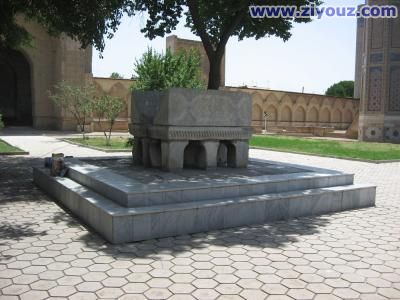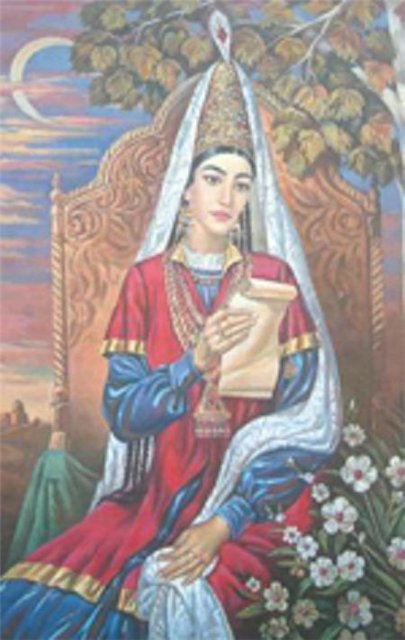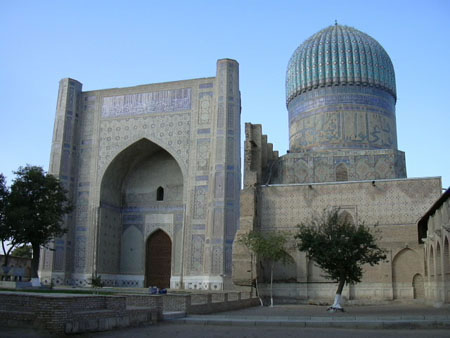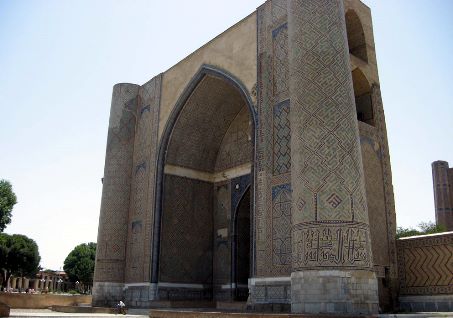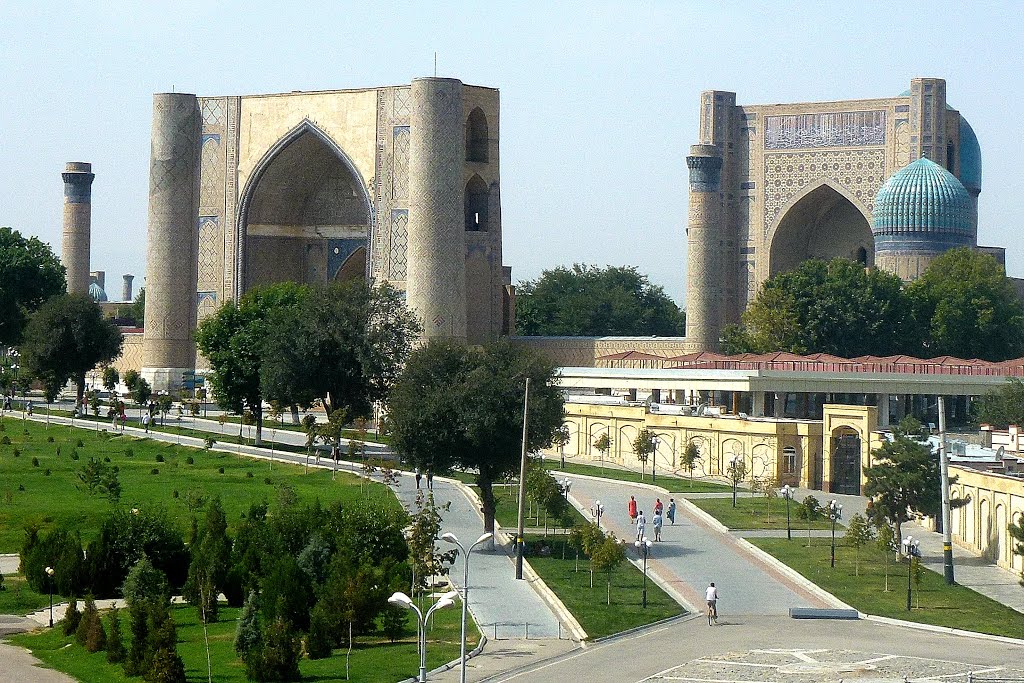Bibi-Khanym Mosque is a famous historical Friday mosque in Samarkand, Uzbekistan, whose name comes from the wife of 14th-century ruler, Amir Timur.
A photograph taken sometime between 1905 and 1915 by color photography pioneer Sergei Mikhailovich Prokudin-Gorskii shows the mosque's appearance after its collapse in the earthquake of 1897.
The outer walls (see picture) are 167 metres (182.63 yards) in length and 109 metres (119.20 yards) in width. The cupola of the main chamber reaches a height of 40 metres, and the entranceway is 35 metres high. There is a large marble Qur'an stand in the centre of the courtyard.
After his Indian campaign in 1399 Timur decided to undertake the construction of a gigantic mosque in his new capital, Samarkand. The mosque was built using precious stones captured during his conquest of India. According to Ruy Gonzáles de Clavijo, 90 captured elephants were employed merely to carry precious stones, so as to erect a mosque at Samarkand — Bibi-Khanym Mosque. Construction was completed between 1399 and 1404. However, the mosque slowly fell into disuse, and crumbled to ruins over the centuries. Its demise was hastened due to the fact it pushed the construction techniques of the time to the very limit, and the fact that it was built too quickly. It eventually partially collapsed in 1897 when an earthquake occurred.
However, in 1974 the government of the then-Uzbek SSR began to reconstruct the mosque, although the current mosque is effectively a brand-new building, as no original work remains. Siyob Bazaar at the foot of the Bibi-Khanym has changed little since 600 years ago.




